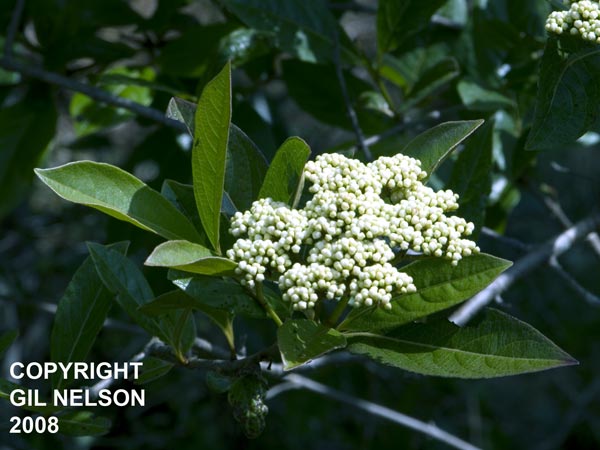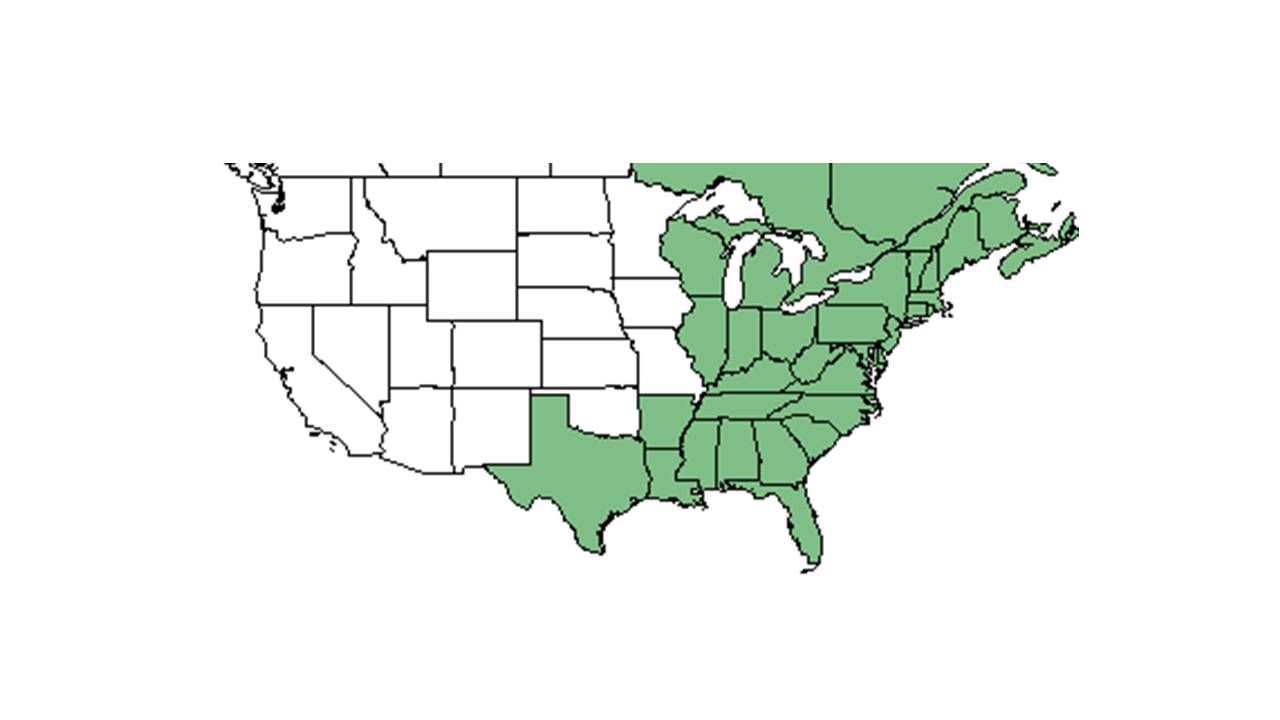Difference between revisions of "Viburnum nudum"
KatieMccoy (talk | contribs) (→References and notes) |
KatieMccoy (talk | contribs) (→References and notes) |
||
| Line 43: | Line 43: | ||
==Photo Gallery== | ==Photo Gallery== | ||
==References and notes== | ==References and notes== | ||
| − | Florida State University Robert K. Godfrey Herbarium database. URL: [http://herbarium.bio.fsu.edu http://herbarium.bio.fsu.edu]. Last accessed: | + | Florida State University Robert K. Godfrey Herbarium database. URL: [http://herbarium.bio.fsu.edu http://herbarium.bio.fsu.edu]. Last accessed: July 2015. Collectors: Loran C. Anderson, H. Kurz, Ann F. Johnson, Angus Gholson, Wilson Baker, R. R. Smith, Robert K. Godfrey, Robert Kral, P. L. Redfearn, K. Craddock Burks, Bruce Hansen, G. Robinson, Andre F. Clewell, J. P. Gillespie, E. S. Ford, P. White, Bruce Nelson, L. B. Trott, Lloyd H. Shinners, Robert J Lemaire, A. G. Shuey, R.A. Norris, R. Komarek, Cecil R Slaughter, Michael Keys, Annie Schmidt. States and Counties: Florida: Bay, Calhoun, Clay, Columbia, DeSoto, Duval, Escambia, Franklin, Gadsden, Jefferson, Leon, Liberty, Okaloosa, Osceola, Polk, Santa Rosa, St. Johns, Union, Wakulla, Walton. Georgia: Clinch, Thomas. Compiled by Tall Timbers Research Station and Land Conservancy. |
Revision as of 20:16, 12 October 2015
| Viburnum nudum | |
|---|---|

| |
| Photo taken by Gil Nelson | |
| Scientific classification | |
| Kingdom: | Plantae |
| Division: | Magnoliophyta – Flowering plants |
| Class: | Magnoliopsida – Dicotyledons |
| Order: | Dipsacales |
| Family: | Caprifoliaceae |
| Genus: | Viburnum |
| Species: | V. nudum |
| Binomial name | |
| Viburnum nudum L. | |

| |
| Natural range of Viburnum nudum from USDA NRCS Plants Database. | |
Common name: possumhaw
Contents
Taxonomic notes
Description
Distribution
Ecology
Habitat
In the Coastal Plain in Florida and Georgia, V. nudum can be found in mesic thickets, mesic woodlands, along spring-fed lakes, swampy woodlands, creek heads, ravine seepage areas, stagnant branch swamps, bottomland hardwood stands, pine-titi flats, floodplains, acid flatwoods in sweet bay swamps, pine flatwoods, pine-saw palmetto flatwoods, annually burned pinelands, coastal hammocks, and hickory-oak-magnolia forests (FSU Herbarium). It has also been found along gas pipeline corridors, nature trails, powerline cooridors, and logged pine flatwoods. It has been found to grow in sandy peat soils and loamy sand (FSU Herbarium).
Associated species include Gordonia, Illicium, Magnolia, Stewartia, Myrica cerifera, Vitis rotundifolia, Lyonia lucida, Thelypteris palustris, Itea virginica, Clethra alnifolia, Leucothoe racemosa, Solidago, Nyssa biflora, Taxodium ascendens, Smilax laurifolia, Acer rubrum, and Magnolia virginiana (FSU Herbarium).
Phenology
Flowers and fruits March through November (FSU Herbarium).
Seed dispersal
Seed bank and germination
Fire ecology
Pollination
Use by animals
Diseases and parasites
Conservation and Management
Cultivation and restoration
Photo Gallery
References and notes
Florida State University Robert K. Godfrey Herbarium database. URL: http://herbarium.bio.fsu.edu. Last accessed: July 2015. Collectors: Loran C. Anderson, H. Kurz, Ann F. Johnson, Angus Gholson, Wilson Baker, R. R. Smith, Robert K. Godfrey, Robert Kral, P. L. Redfearn, K. Craddock Burks, Bruce Hansen, G. Robinson, Andre F. Clewell, J. P. Gillespie, E. S. Ford, P. White, Bruce Nelson, L. B. Trott, Lloyd H. Shinners, Robert J Lemaire, A. G. Shuey, R.A. Norris, R. Komarek, Cecil R Slaughter, Michael Keys, Annie Schmidt. States and Counties: Florida: Bay, Calhoun, Clay, Columbia, DeSoto, Duval, Escambia, Franklin, Gadsden, Jefferson, Leon, Liberty, Okaloosa, Osceola, Polk, Santa Rosa, St. Johns, Union, Wakulla, Walton. Georgia: Clinch, Thomas. Compiled by Tall Timbers Research Station and Land Conservancy.